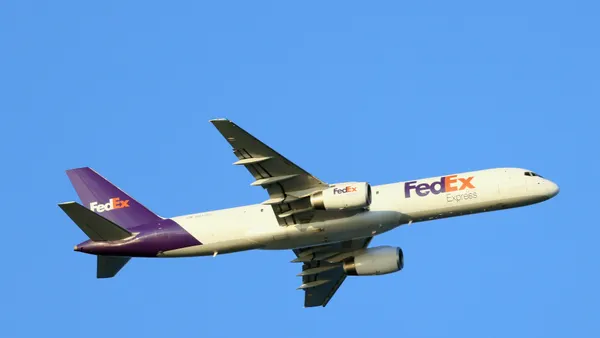Dive Brief:
- Airfreight volume fell 5% YoY in December, but demand did see its first sign of YoY growth in weekly figures. Freight was up 8% YoY between Dec. 21 and Jan. 3, according to the latest data from Clive.
- Airfreight capacity was down 21% YoY in December, despite experiencing a 2% increase from November.
- Air rates were either flat or increased in December, compared to the previous month, and the impact from the shipment of COVID-19 vaccines has so far been minimal, Robert Frei, business development director at TAC Index, said in a press release with the Clive figures.
Dive Insight:
COVID-19 case numbers have been increasing in countries around the world in recent weeks, which has resulted in some new lockdown measures. But these preventative steps tend to affect the services sector the most, which means the lack of capacity is still the main hurdle holding back airfreight growth, according to the most recent freight report from the International Air Transport Association.
The lack of capacity along with continued demand pushed rates above 2019 levels. Rates more than doubled YoY from China to the U.S. to reach $7.57 per kilogram in the last week of December, but pricing has already fallen to reach $6.19 per kilogram in the first half of January, according to the TAC Index.
Modest volume at the end of 2020 shows that a strong peak season the air cargo industry hoped for "failed to materialize," Frei said. Still, airlines had trouble keeping up with the seasonal uptick due to restricted fleet sizes and operational issues such as canceled flights, according to IATA.
In mid-December, FedEx Chief Marketing and Communications Officer Brie Carere said the logistics company expects airfreight demand to return to pre-pandemic levels before airline passenger traffic.
"Currently Asia to U.S. and Asia to Europe passenger capacity is expected to recover to pre-COVID levels by 2023, and Europe to U.S. is expected to recover by 2024," Carere said. "Our goal is to profitably take market share and keep it beyond the capacity shortage internationally."
The demand for airfreight combined with the lack of capacity has resulted in some companies expanding their internal fleets. Amazon, for example, announced plans last week to buy 11 freight planes.














